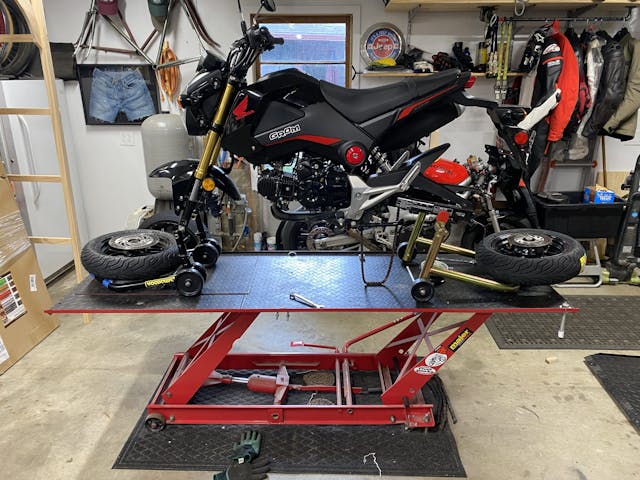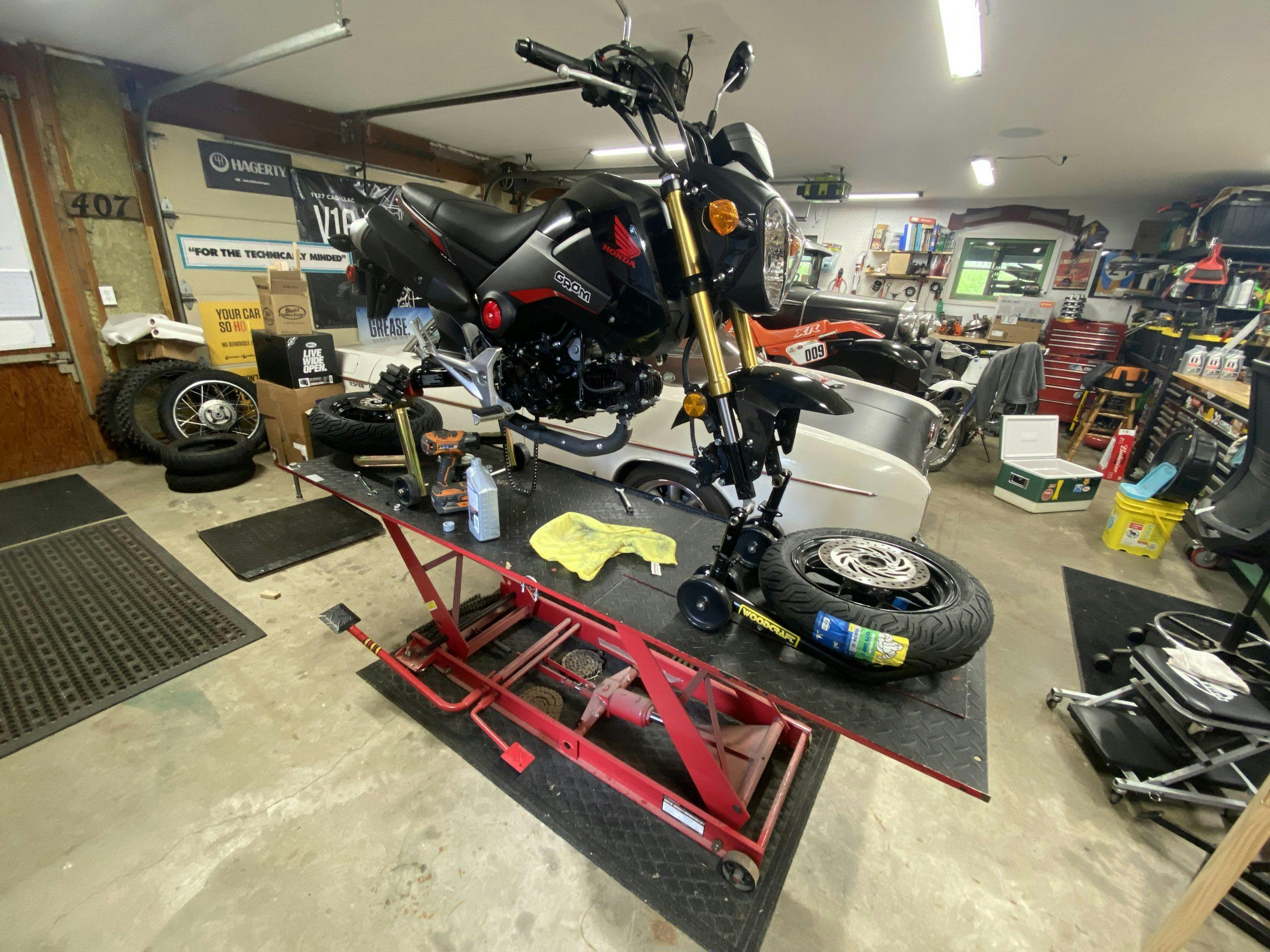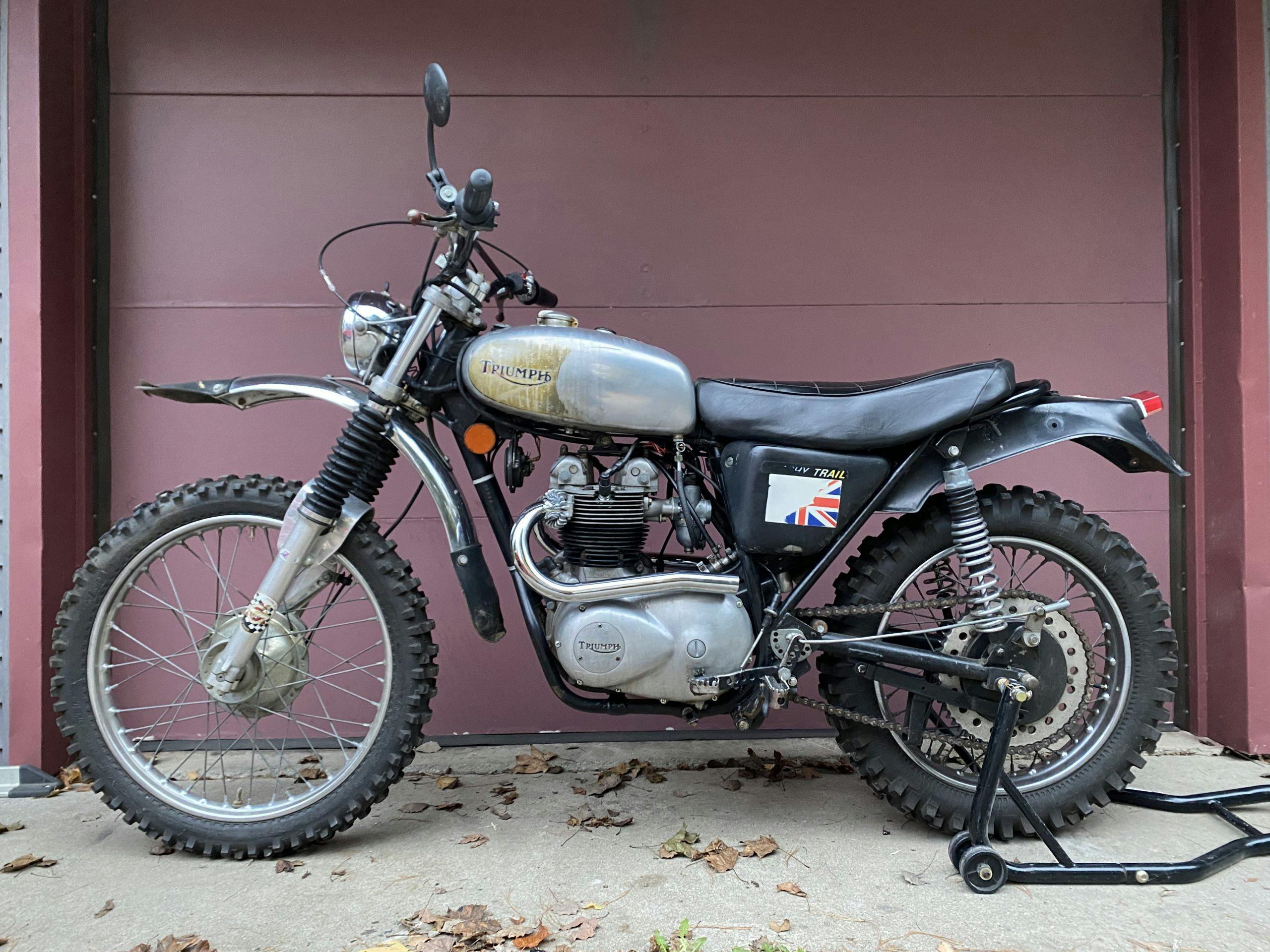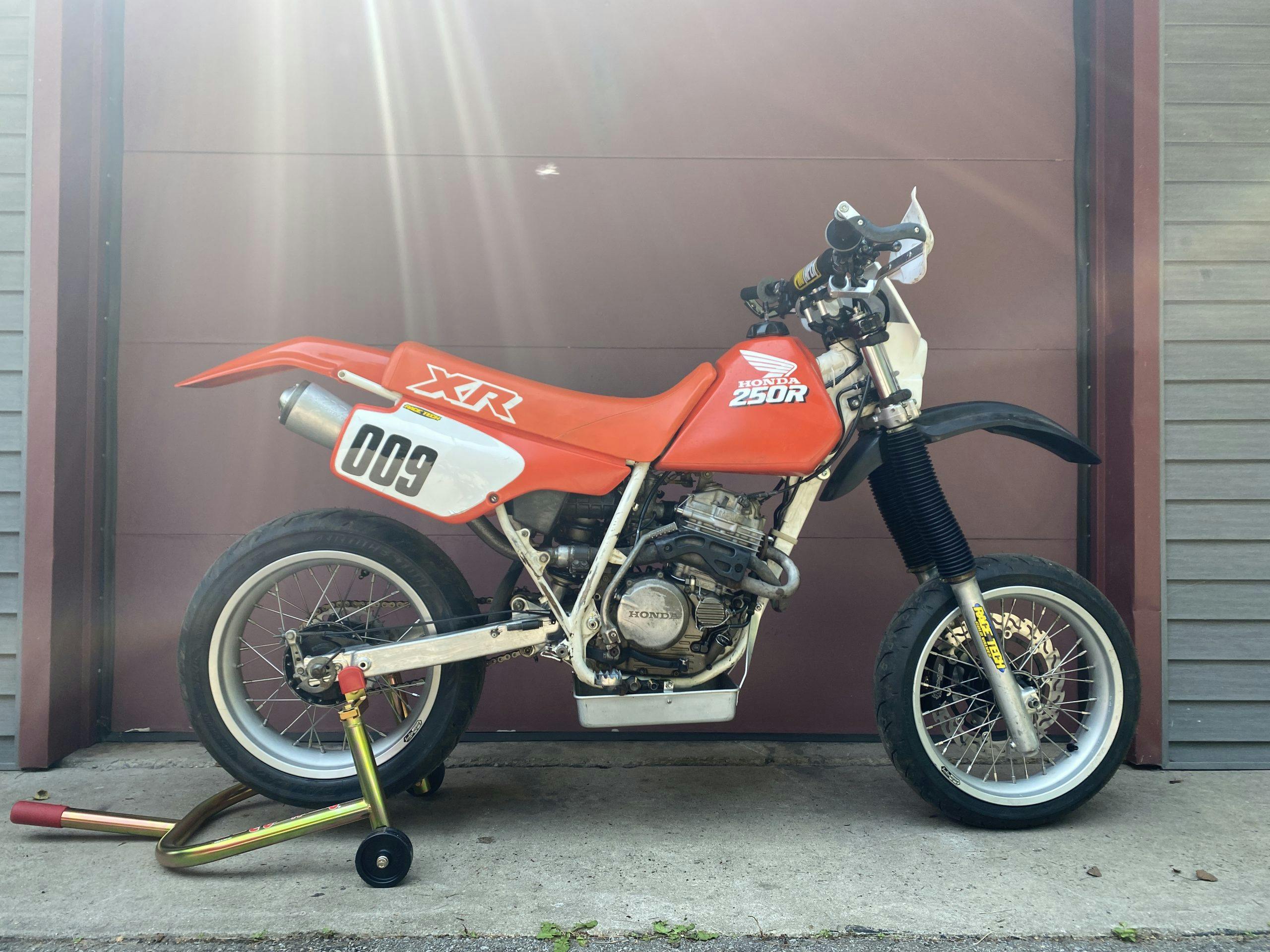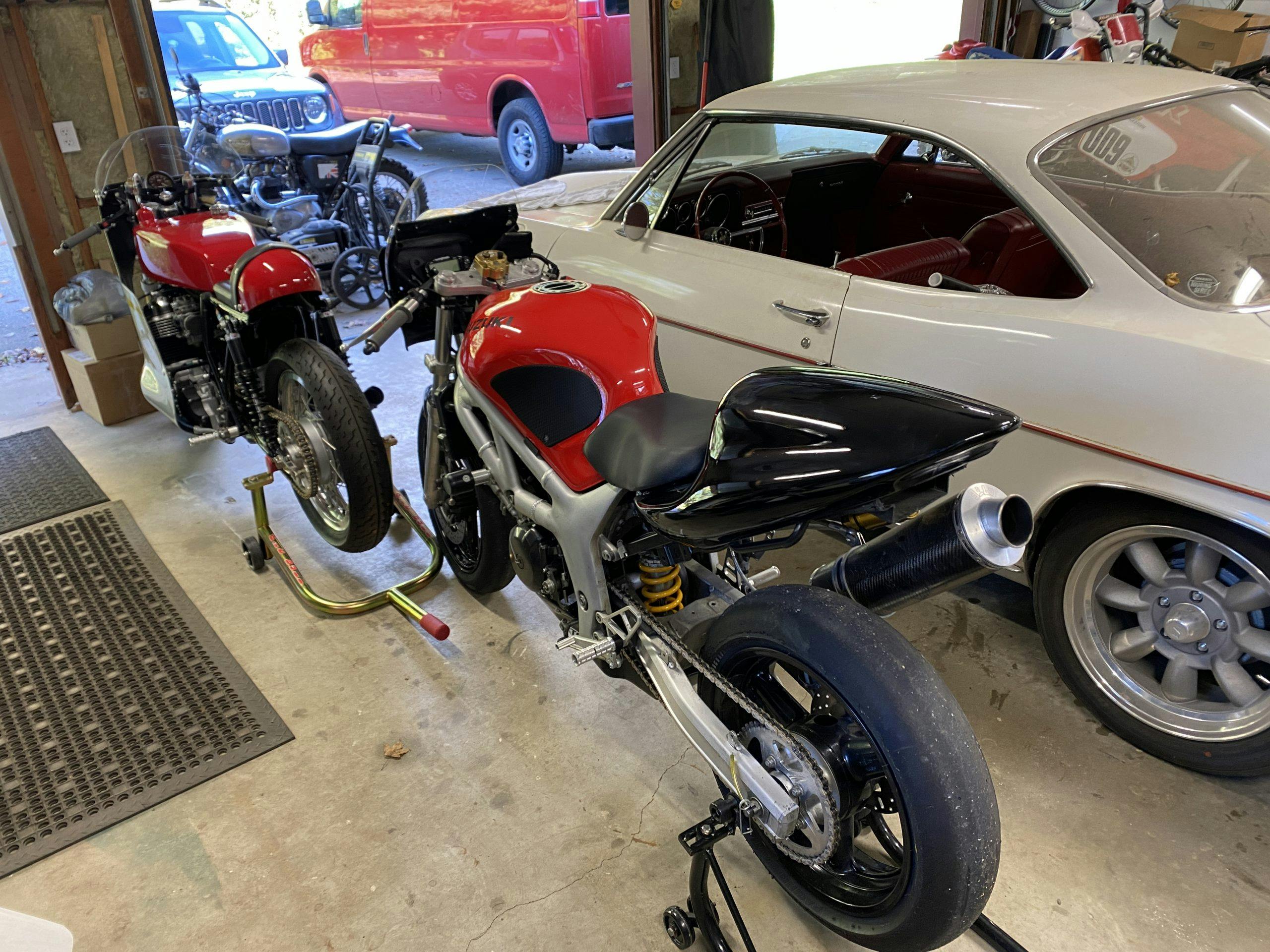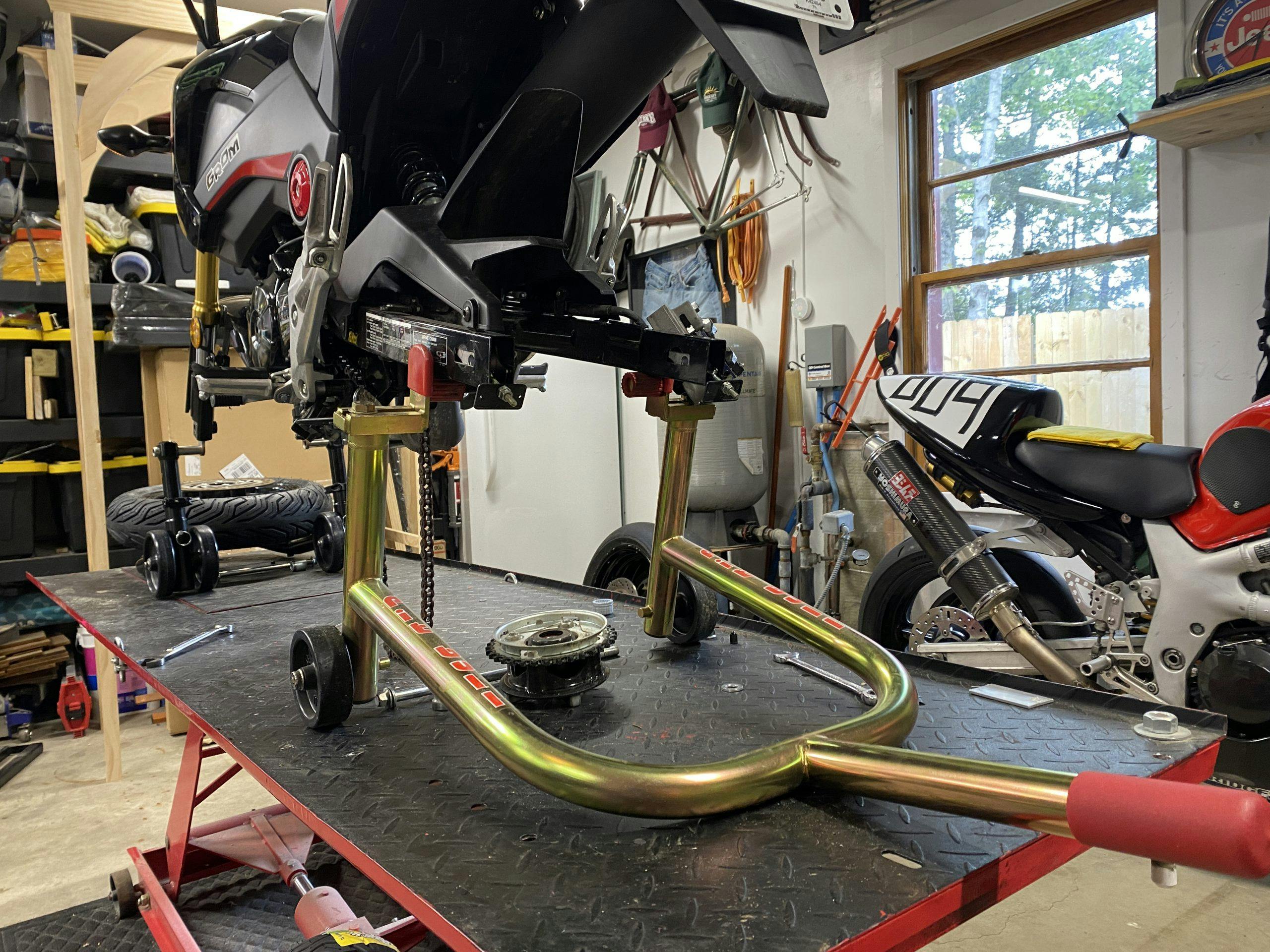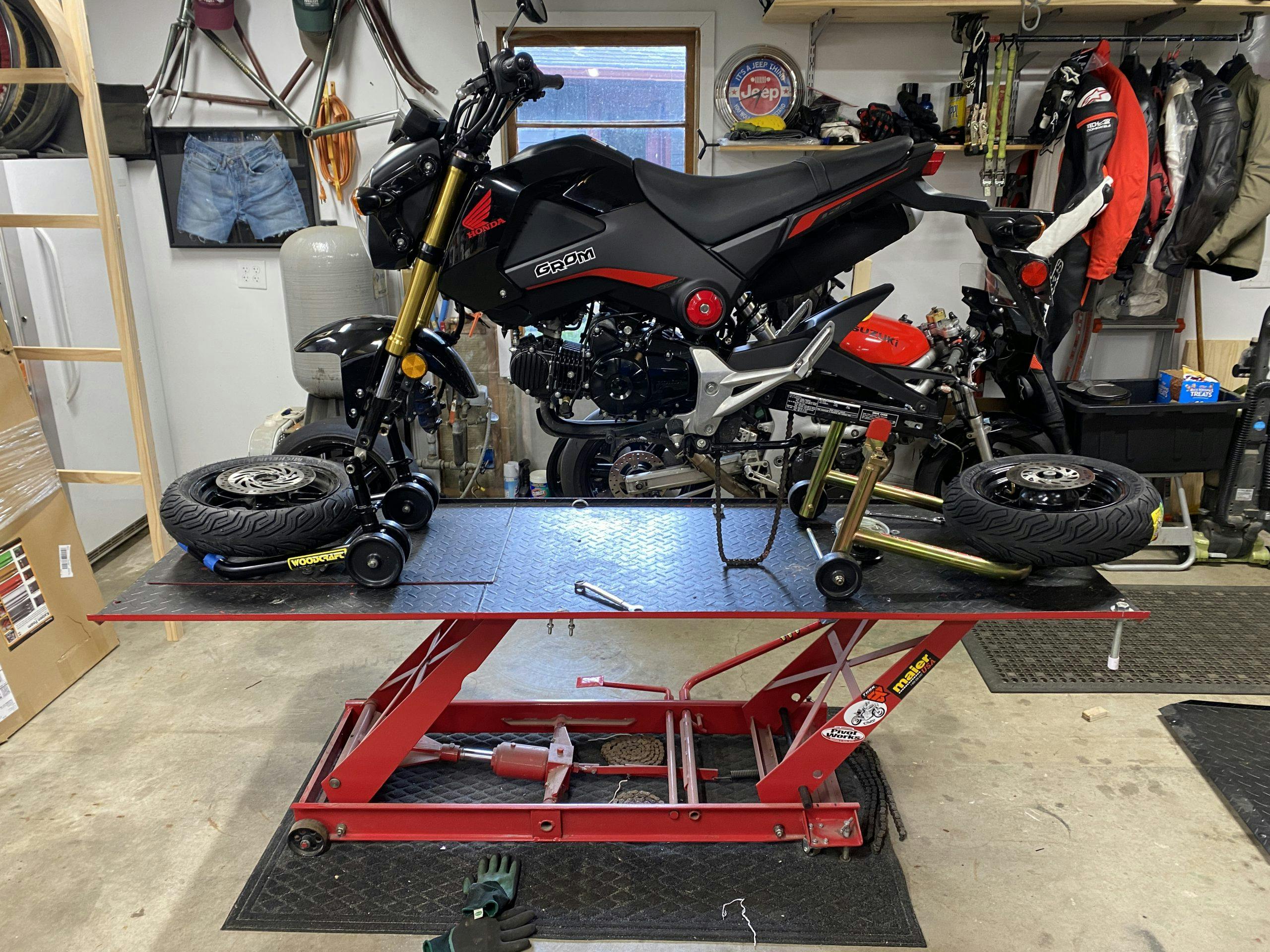Media | Articles
These two tools changed how I wrench on motorcycles
Time set aside to work on projects is worthy relishing. The clicks of a ratchet or the light chunk of two machined surfaces fitting together perfectly is therapeutic. No diehard DIYer wants to sacrifice this sort of mechanical zen for efficiency, but we all want to remove the crummy processes of each job so that only the rewarding bits remain. In the hunt for the perfect blend of manual labor and mental enjoyment, I’ve found two tools that are now my favorites: A motorcycle lift and pair of paddock stands.
Recently I reached the point in my life where I have been working on cars and motorcycles longer than I haven’t. In the early years every job was done on the floor. I sat on the floor. Spread tools on the floor. Laid the project—you guessed it—on the floor. Maybe when we were 17 years old, we could tolerate sitting or kneeling on concrete for hours on end. (I remember falling asleep on a gravel driveway while working on the gas tank of a particular 1961 Chevrolet Corvair Greenbrier.) Now, barely past 30 years old, I need to wear the right shoes when I go out to the garage or my back will hurt all night.
Enter the motorcycle lift. What I initially deemed an indulgence has become a tool you will have to pry from my cold, dead hands. Found on Facebook Marketplace for half the price of new, this Harbor Freight manual motorcycle lift was the best couple hundred dollars I’ve spent this side of an electric impact. My garage only has 8-foot ceilings and is packed so full that I can’t bolt down a mid-rise lift. This platform is the perfect solution, because it lifts any one of my motorcycles to a nice 26-inch working height and, when folded, slides under any of my cars.
At first thought, 26 inches of extra height doesn’t sound like much, but for my six-foot frame, it puts engines and other mechanical bits of motorcycles right at chest level, making things easy to inspect and service. It’s been about two years since I bought this lift and in that time I’ve serviced probably 30 different bikes. I even use it for my lawn mower from time to time. Only during the busiest of days have I lusted after a more expensive, air-over-hydraulic model like those used in commercial shops that would lift the table without requiring me to pump the foot pedal a few dozen times. Retaining some manual labor keeps me from going soft, though—and I’m generally frugal when it comes to a purchase like this, so the thought of spending $1000 for additional convenience makes me cringe. Maybe one day.
Even I knew better than to pinch pennies on this second must-have tool, however. I first bought paddock stands out of necessity, but they’ve now become near-critical to keep my garage functioning normally. The function of a paddock stand is simple: Support the front and rear of a motorcycle so that it is straight up and down and the tires are off the ground. The name is derived from their typical use-case: Race machines usually need tire warmers or wheel-off service in the paddock between stints on the track. (It is also rare for a race machine to retain its side-stand; most require external support.)
Marketplace
Buy and sell classics with confidence
Stands make chain maintenance super simple. Same with tire and oil changes. Most service manuals want the bike vertical when draining any fluids, and a rear stand is the easiest way to achieve that orientation with any bike that doesn’t carry its own center stand. Last summer, in the middle of the Six Ways to Sunday racing project, I bought a stand so I could take the ol’ XR250R road-racing. With a belly pan under the bike, I couldn’t flop the bike onto a motocross stand, as one would normally store a dirt bike. Much like the lift, paddock stands only revealed their usefulness after I began to use them. I now own four, mainly because storing motorcycles vertically rather than leaned over is a lot easier. Paddock stands also save me from muscling big bikes like my Triumph TR5T down from or up onto a stand if it’s the way of another project.
The value of these two tools lies in their ability to improve the quality of work done. Minimizing the amount of labor comes second. With a lift and paddock stands, I waste less time and energy working on the floor or devising ways to prop up a motorcycle safely, meaning that I can invest my time and focus into the actual project. That’s what tools are for. Whether or not I upgrade my lift or paddock stands, my shop will never be without them.
